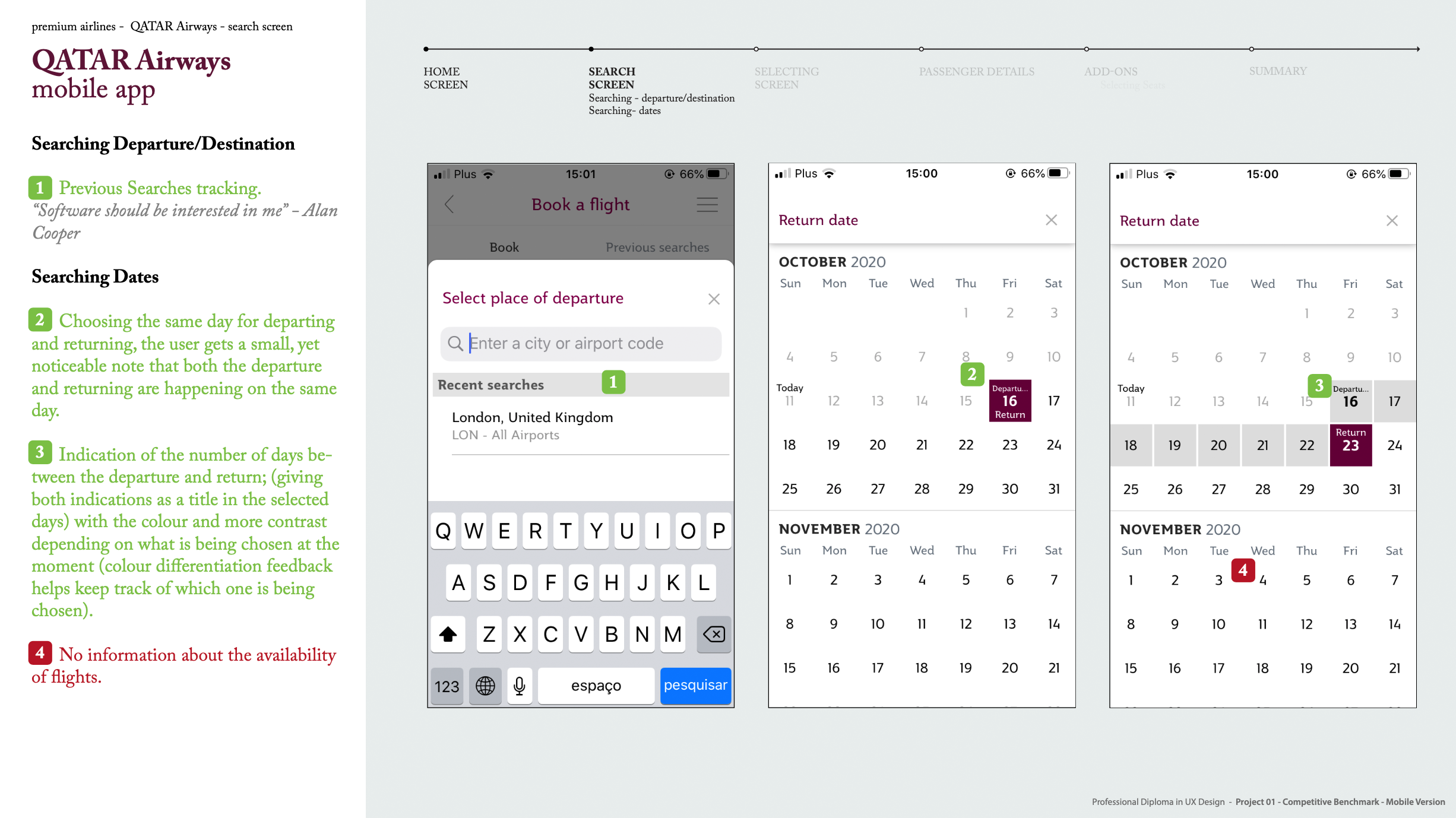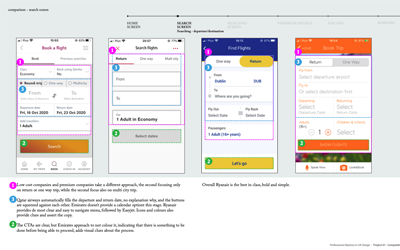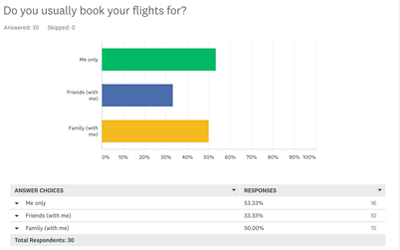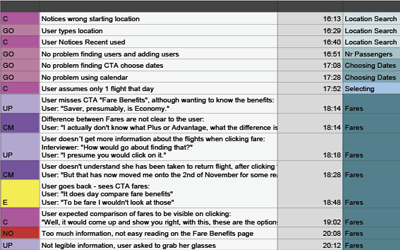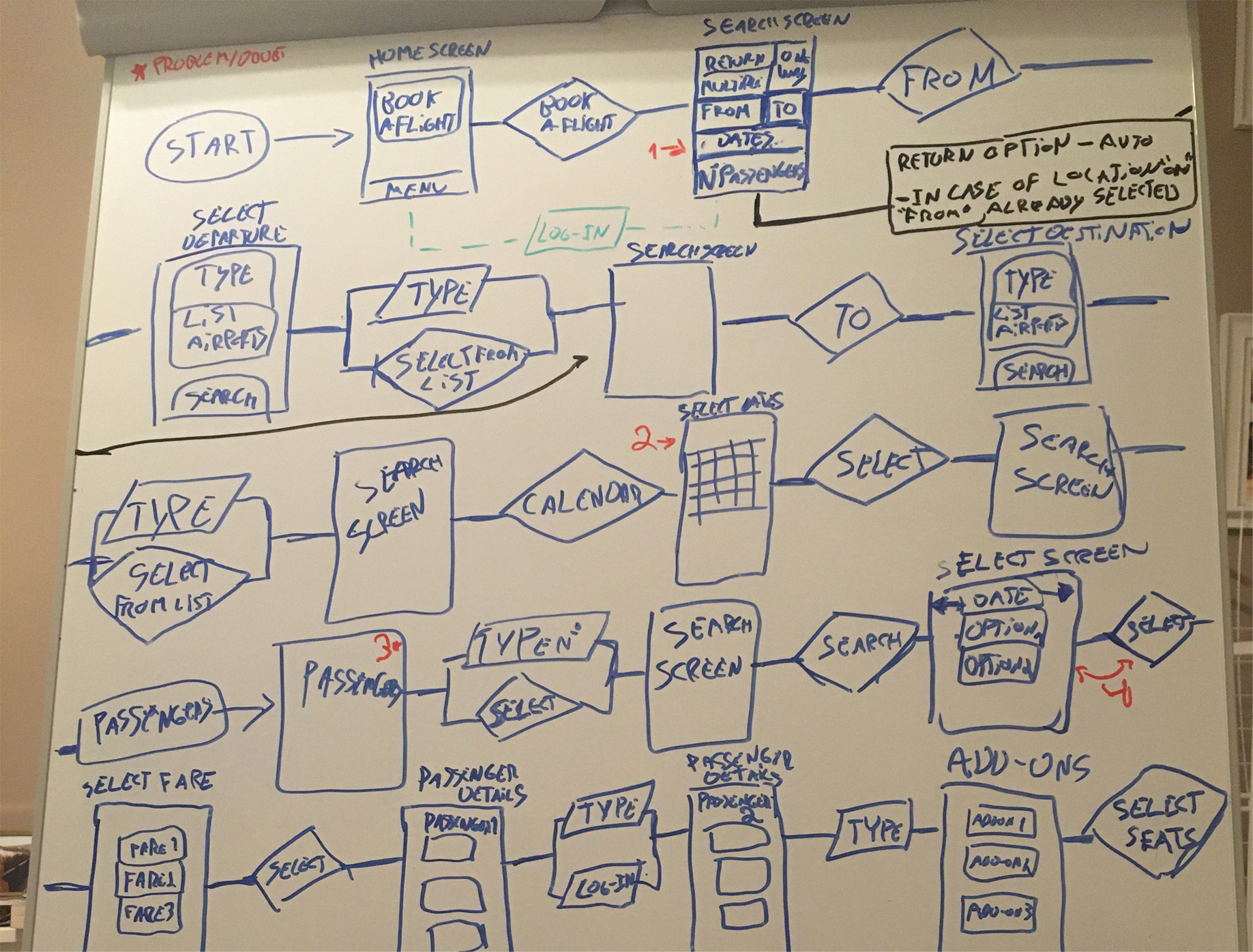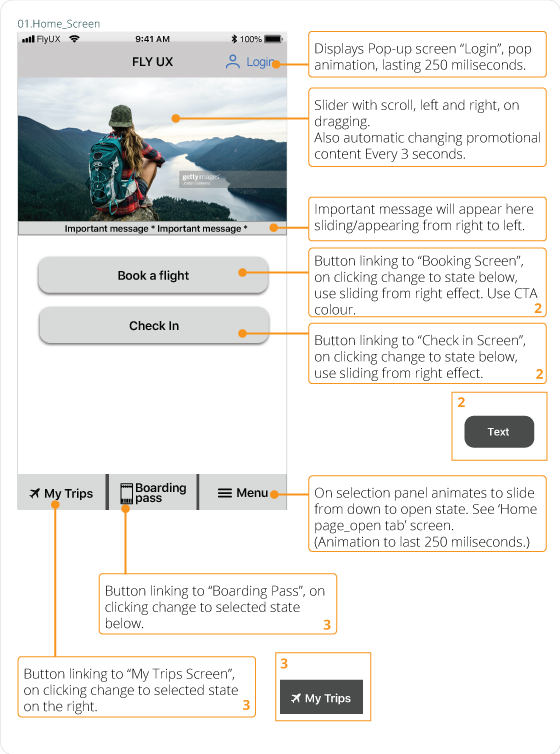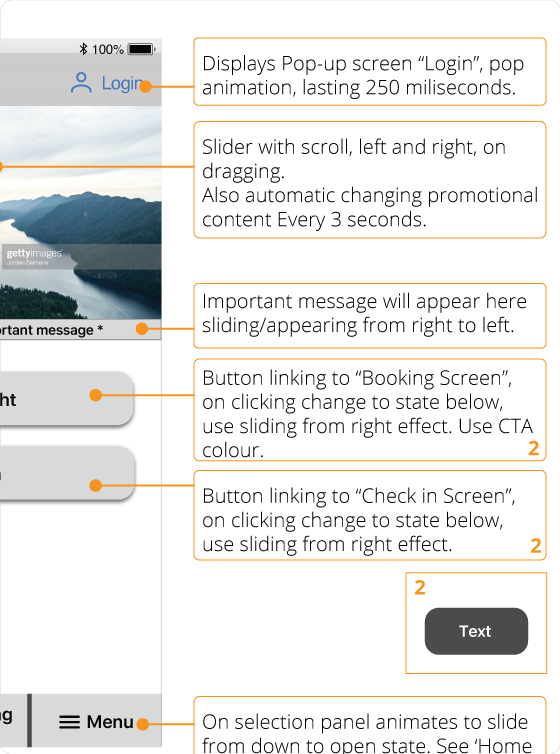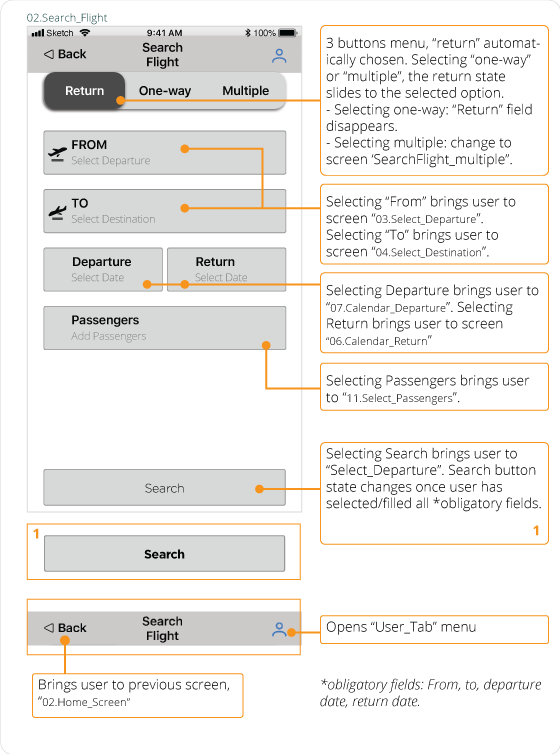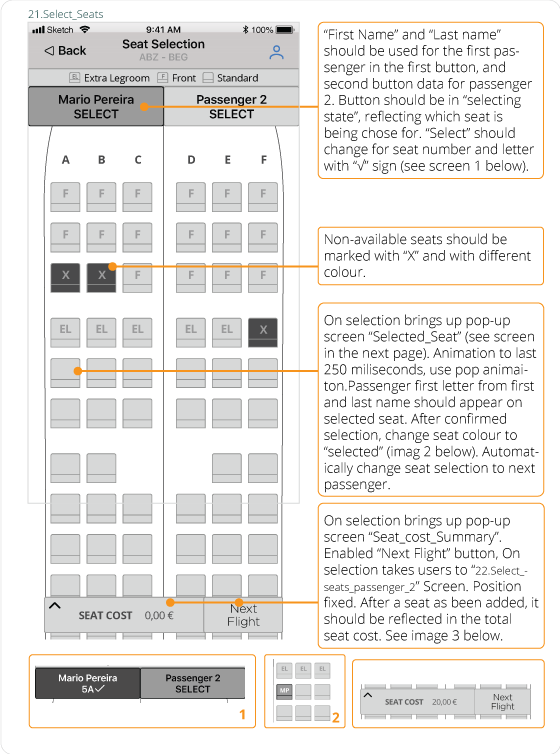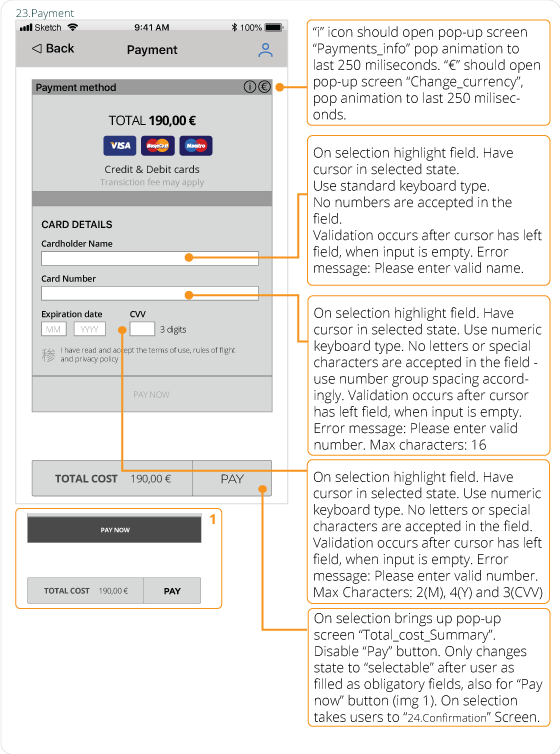2. User Research
The user research stage was essential for identifying problems and pluses from competitors and creating a goal oriented approach for my project. The competitive benchmark allowed me to identify industry standards; the survey was useful to define the goals and the note-taking to point out pain points and expected app behaviours. The reason why I chose Ryanair, Easyjet, Qatar Airlines and Emirates was to have different perspectives on the low cost and luxury market.




